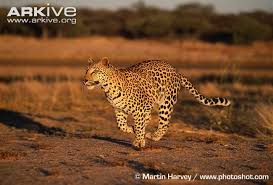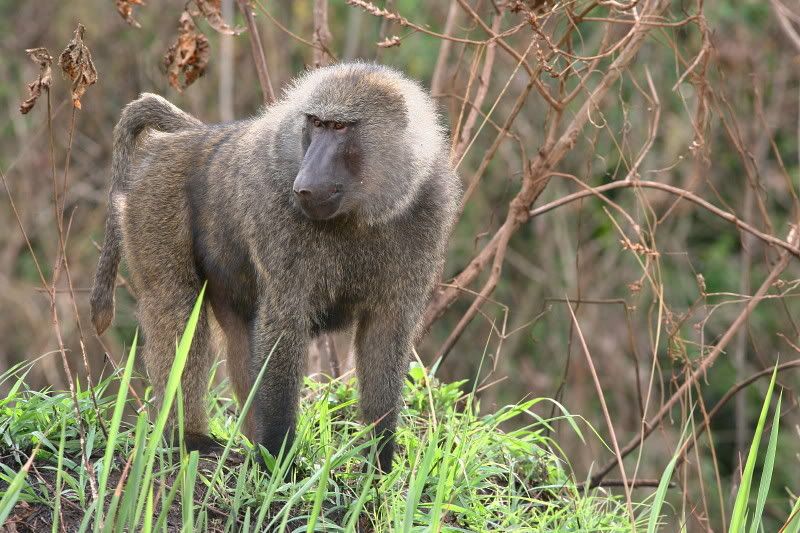Post by dinosauria101 on May 2, 2019 3:31:20 GMT 5
Leopard - Panthera pardus
The leopard, Panthera pardus, is a member of the Felidae family and the smallest of the four "big cats" in the genus Panthera, the other three being the tiger, lion, and jaguar. The leopard was once distributed across eastern and southern Asia and Africa, from Siberia to South Africa, but its range of distribution has decreased radically because of hunting and loss of habitat. It is now chiefly found in sub-Saharan Africa; there are also fragmented populations in Indonesia, Pakistan, India, Sri Lanka, Indochina, Malaysia, and China. Because of its declining range and population, it is listed as a "Near Threatened" species by the IUCN. Leopard are agile and stealthy predators. Although smaller than other members of the Panthera genus, they are able to take large prey due to their massive skulls that facilitate powerful jaw muscles. Head and body length is between 125 and 165 cm (49 and 65 in), and the tail reaches 60 to 110 cm (24 to 43 in). Shoulder height is 45 to 80 cm (18 to 31 in). The muscles attached to the scapula are exceptionally strong, which enhance their ability to climb trees. They show a great diversity in size. Males are about 30% larger than females, weighing 30 to 91 kg (66 to 200 lb) compared to 23 to 60 kg (51 to 130 lb) for females. Large males of up to 91 kg have been documented in Kruger National Park in South Africa; however, males in the South Africa's coastal mountains average 31 kg. This wide variation in size is thought to result from the quality and availability of prey found in each habitat. Smaller sized leopards also are known in the deserts of the Middle East. Its body is comparatively long, and its legs are short.

Olive Baboon (troop of 2) - Papio anubis
The olive baboon (Papio anubis), also called the Anubis baboon, is a member of the family Cercopithecidae (Old World monkeys). The species is the most widely ranging of all baboons: it is found in 25 countries throughout Africa, extending from Mali eastward to Ethiopia and Tanzania. Isolated populations are also found in some mountainous regions of the Sahara. It inhabits savannahs, steppes, and forests. The olive baboon is named for its coat, which, at a distance, is a shade of green-grey. (Its alternate name comes from the Egyptian god Anubis, who was often represented by a dog head resembling the dog-like muzzle of the baboon.) At closer range, its coat is multi-colored, due to rings of yellow-brown and black on the hairs. The hair on the baboon's face, however, is coarser and ranges from dark grey to black. This coloration is shared by both sexes, although males have a mane of longer hair that tapers down to ordinary length along the back. Besides the mane, the male olive baboon differs from the female in terms of size and weight; males are, on average, 70 cm (28 in) tall and weigh 24 kg (53 lb); females measure 60 cm (24 in) and 14.7 kg (32 lb). Some males may weigh as much as 50 kg (110 lb). Olive baboons are sexual dimorphic in body and canine tooth size.

Credit to Wikipedia
The leopard, Panthera pardus, is a member of the Felidae family and the smallest of the four "big cats" in the genus Panthera, the other three being the tiger, lion, and jaguar. The leopard was once distributed across eastern and southern Asia and Africa, from Siberia to South Africa, but its range of distribution has decreased radically because of hunting and loss of habitat. It is now chiefly found in sub-Saharan Africa; there are also fragmented populations in Indonesia, Pakistan, India, Sri Lanka, Indochina, Malaysia, and China. Because of its declining range and population, it is listed as a "Near Threatened" species by the IUCN. Leopard are agile and stealthy predators. Although smaller than other members of the Panthera genus, they are able to take large prey due to their massive skulls that facilitate powerful jaw muscles. Head and body length is between 125 and 165 cm (49 and 65 in), and the tail reaches 60 to 110 cm (24 to 43 in). Shoulder height is 45 to 80 cm (18 to 31 in). The muscles attached to the scapula are exceptionally strong, which enhance their ability to climb trees. They show a great diversity in size. Males are about 30% larger than females, weighing 30 to 91 kg (66 to 200 lb) compared to 23 to 60 kg (51 to 130 lb) for females. Large males of up to 91 kg have been documented in Kruger National Park in South Africa; however, males in the South Africa's coastal mountains average 31 kg. This wide variation in size is thought to result from the quality and availability of prey found in each habitat. Smaller sized leopards also are known in the deserts of the Middle East. Its body is comparatively long, and its legs are short.
Olive Baboon (troop of 2) - Papio anubis
The olive baboon (Papio anubis), also called the Anubis baboon, is a member of the family Cercopithecidae (Old World monkeys). The species is the most widely ranging of all baboons: it is found in 25 countries throughout Africa, extending from Mali eastward to Ethiopia and Tanzania. Isolated populations are also found in some mountainous regions of the Sahara. It inhabits savannahs, steppes, and forests. The olive baboon is named for its coat, which, at a distance, is a shade of green-grey. (Its alternate name comes from the Egyptian god Anubis, who was often represented by a dog head resembling the dog-like muzzle of the baboon.) At closer range, its coat is multi-colored, due to rings of yellow-brown and black on the hairs. The hair on the baboon's face, however, is coarser and ranges from dark grey to black. This coloration is shared by both sexes, although males have a mane of longer hair that tapers down to ordinary length along the back. Besides the mane, the male olive baboon differs from the female in terms of size and weight; males are, on average, 70 cm (28 in) tall and weigh 24 kg (53 lb); females measure 60 cm (24 in) and 14.7 kg (32 lb). Some males may weigh as much as 50 kg (110 lb). Olive baboons are sexual dimorphic in body and canine tooth size.

Credit to Wikipedia




